The future of aviation: a definitive guide to the next 20 years
- Like
- Digg
- Del
- Tumblr
- VKontakte
- Buffer
- Love This
- Odnoklassniki
- Meneame
- Blogger
- Amazon
- Yahoo Mail
- Gmail
- AOL
- Newsvine
- HackerNews
- Evernote
- MySpace
- Mail.ru
- Viadeo
- Line
- Comments
- Yummly
- SMS
- Viber
- Telegram
- Subscribe
- Skype
- Facebook Messenger
- Kakao
- LiveJournal
- Yammer
- Edgar
- Fintel
- Mix
- Instapaper
- Copy Link
Posted: 31 May 2017 | International Airport Review | 2 comments
What will define the next 20 years in aviation? Which technologies, challenges, regions and innovations will shape the future of our industry? Find out here…
We are running a monthly online feature that celebrates the top 20 of all things aviation. The latest instalment, that follows on from our analysis of the top 20 world airports and top 20 airports by passenger number, is one that specifically looks forward.
International Airport Review‘s guide to the 20 defining factors that will change airport and aviation over the next two decades does not necessarily look at each aspect in order of importance but crucially includes those we firmly believe to be the 20 innovations, challenges and general phenomena that hold a valid claim to their inclusion in our list.
#1 Drones
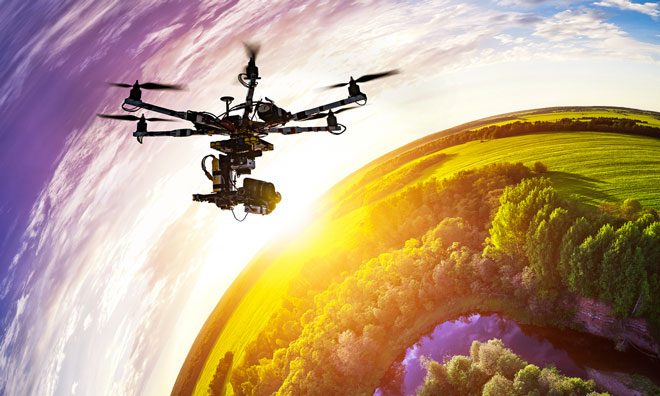

Firstly, let’s begin with the question of unmanned aerial vehicles (UAVs), or as the dictionary might describe them: an aircraft piloted by remote control or onboard computers. Most normal citizens however, call them drones, so we shall run with this term.
Are drones a true threat to ATM and ATC? Should airports and airlines (and passengers) be wary of their interference in operations? Are current regulations sufficient? Might they become a vehicle for those to conduct terrorist activity at airports?
Unfortunately, we don’t really have the definitive answers to these questions – more speculative thoughts regarding future threats. Drones are most definitely entering the conversation and are being discussed in greater detail than ever before. Certain parties (NATS are an example) are already offering consumer guidance on how to operate drones safely and responsibly. However, it is widely considered that drones have the potential to destabilise the safety of operations at airports around the world. Like with many emerging technologies and phenomena, the impetus is on the industry and regulators to anticipate and not react to potential threats.
Either way, we believe that drones are highly likely to become an increasingly important conversation we need to have in the industry moving forward.
#2 AI & robotics


Artificial intelligence is no longer the subject of Oscar-nominated science-fiction films; it is a very real phenomenon that is having a profound socio-economic impact on countries across the globe. The airport and aviation industry is no different and we are seeing robotics too enter the fray. Breakthroughs such as SITA’s innovative automated check-in kiosk that senses which areas of the airport are busy before moving itself to these areas to alleviate check-in queues, and Schiphol’s (among others’) concierge robots that greet passengers with a fixed smile upon entry into the Dutch airport, are just some of the wide range of different robotic disrupters that we are seeing enter some of the world’s largest airports.
This will only continue to grow as the private sector continues to pour more capital into investment in automation and AI… perhaps one day we might not even have to speak to a human when travelling by air.
Whether this scares or excites you, it might well become the reality for all at some point over the next few decades. It’s our job now to prepare ourselves.
#3 Cyber security


This topic needs little introduction.
If you’ve been listening to the news over the past twelve months, you’ll be well aware of the nature of the threat that cyber attacks pose to all aspects of society. In the politically unstable world we are currently faced with, conflict is increasingly occurring online.
It is our belief that the threat posed by cyber attacks will only intensify. It’s time for the airport and aviation industry to act now to ensure that security does not exclusively exist on the ground, but like the threat, becomes a significant force in the digital universe.
#4 Environmental change


It’s not all doom and gloom…
In the face of the obvious challenges aviation and airport faces with respect to sustainable development and climate change, the industry has been quick to react. With several leading airports in Europe, led by strict regulation, the environmental footprint of airports is being managed responsibly and the impact of the inevitable emissions mitigated.
If you believe that global warming is a very real phenomenon that could dictate the future of the human race over the course of the next half century, then you’ll agree with our inclusion of environmental change at number two. Aviation and the airport industry needs to continue its excellent work in the face of rising demand and volumes of passengers in ensuring that its emissions growth does not correlate with this trend.
We live in a beautiful world in which many are fortunate enough to be able to travel and see exciting new places and enjoy the benefits of different cultures and practices. Aviation plays an integral role in enabling citizens to do this. Let’s ensure that there’s enough world left to see by continuing the excellent progress made over the past few years in preventing and mitigating the effects of environmental change by the aviation and airport industry.
#5 Big data


‘Seamless travel,’ ‘personalised experience,’ ‘big data.’
These buzz words seem to be everywhere at present – but what do they really mean?
It’s actually extremely simple, benefits all parties and is about the define the next few years of the airport and aviation industry. In essence, the relevant parties that process passengers (airports and airlines predominantly) now have the capacity to collect passenger data en masse. Don’t be scared by this prospect – so long as the data is handled responsibly and securely then it will benefit passenger and airport/airline alike.
With this passenger data, if analysed and implemented intelligently, the airport or airline can tailor experience according to the individual. This might happen in a variety of ways and these ways are themselves in the process of being explored as we speak. However, one example might be that of using an airport app. In light of the passenger knowledge acquired, the airport might send a push notification to a passenger who has in the past particularly enjoyed the duty free section of an airport, promoting a special offer for them. A personal offer perhaps. Equally, the airport would avoid sponsoring retail opportunities to business travellers who wish to get from A to B as rapidly as possible. The airport can find this out via data collection and analysis. This ensures that those that might wish to spend money on luxury chocolates, currently at a 2 for 1 price, know precisely where to get them, and avoids annoying those who are not going to spend. Subsequently, the passenger has a more tailored, personalised experience and in some cases the airport and airline can maximise its revenue intake. It’s a win-win.
Data collection, analytics and subsequent personalisation of experience is just one example of the revolutionary potential data has for the airport and aviation industry, Weather forecasts, queue analytics, even a detail such as understanding at what point of the day there need to be more taxis present at a specific pick-up point can all contribute to the improvement of operational efficient and the elevation of passenger experience to a higher level – and crucially find their root in the correct data collection and analytics of that information.
The future is intelligent and the future is built around the lessons learned from the past. Big data will define the next 20 years in aviation without a doubt and this is why it has been named as International Airport Review‘s number one revolutionary disrupter to the industry.
#6 In-flight services


Despite scares over the recent ban on electronic devices from the UK and US governments, we expect in-flight services to show significant technological progress over the next two decades. With an ever-increasing focus on ensuring the passenger’s experience is as seamless and personalised as possible, the passenger now expects instantaneous access to limitless services and choice of entertainment.
In-flight Wi-Fi we imagine will become an expectation from the passenger and several airlines are taking steps as we speak to offer connectivity.
Furthermore, we have already seen Royal Brunei Airlines among others offer in-flight streaming of the latest TV and music options on mobile devices using cloud streaming technology on-board Royal Brunei Airlines‘ Airbus A320.
It’s indicative of the latest trend that sees the airport and aviation industry react to wider global technological trends striving to provide a wealth of choice for passengers and ensure the personalised seamless experience of their journey.
#7 Real-time updates
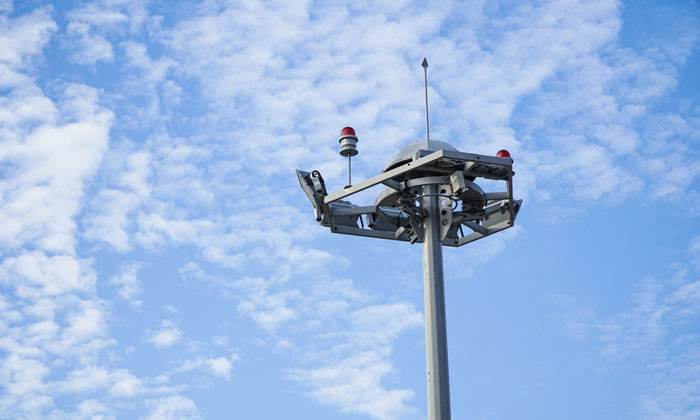

In the same vein, technology will play an integral part in maximising airport efficiency. The processing, sharing and distributing of data, be it internally to staff within an airport or direct to consumers, providing real-time updates on the weather, delayed aircraft – any issues in general – will allow for better communication all round and more effective planning strategy moving forward.
What happens when a passenger requiring disability assistance shows up for a connecting flight unexpectedly because the departure station did not-or was not able to-pass on the information? The theory is that a real-time updates integrated within an efficient management system will enable reaction methods to real-time challenges to be drastically improved upon.
This might well necessitate integration within an app solution, it might not, but we predict developments in real-time updates to arrive sooner rather than later and to significantly aid the overall experience of both passenger and staff alike through advances in communication methods, weather predictions and the overall systemic management of challenges that affect the day-to-day functioning of an airport.
#8 Simplified airspace


The necessity of collaboration across the aviation industry between the various players in the sector is called upon time and time again. This is further reflected in the question of airspace. It i widely considered that our skies are overcomplicated and many believe that measures should be taken to simply our airspace be it between nations or continents. Initiatives such as the Single European Sky embody a broad desire to simplify the schemes – and particularly the process so that the delayed approval of some performance plans is not repeated. There is also agreement on the need to reduce the burden on stakeholders, particularly National Supervisory Authorities and ANSPs, whilst at the same time delivering performance improvements.
The question is, can this be done without impacting the effectiveness of the schemes themselves?
It all stems back to the notion of greater communication between the various parties within the aviation sector and their need to communicate to better ensure that a simplified airspace – essentially what we all desire – can be enacted in the interests of all regions, airlines, airports etc.
In this respect we hope, but also expect significant progress to have been achieved by 2036 on the issue so watch this (air)space over the next few years.
#9 Single token


Single token travel, facial recognition technologies, biometrics – whichever name you choose for the topic will have a huge impact. Single token travel looks to become a staple of air travel in the very near future. With extremely exciting developments such as the work Happy Flow is achieving at Aruba as well as releases at several of the major airports and airlines around the world all evidence the fact that there significant investments in biometric technology everywhere.
How might end-to-end passenger facilitation using a single token become the solution to enable economical and sustainable growth at airports?
Airports, governments and airlines are increasingly looking to create synergy between the airport stakeholders responsible for passenger facilitation through a seamless process. The number of passengers over the next 20 years is predicted to double and as such airports and airlines must prepare for this growth while attending to more demanding passengers in a competitive environment.
We believe the significant advances already witnessed in biometric and facial recognition technology will only explode further and that single token travel will become an expectation, not a technological novelty over the next 20 years.
Single token travel is the key to a seamless experience.
#10 Self-service
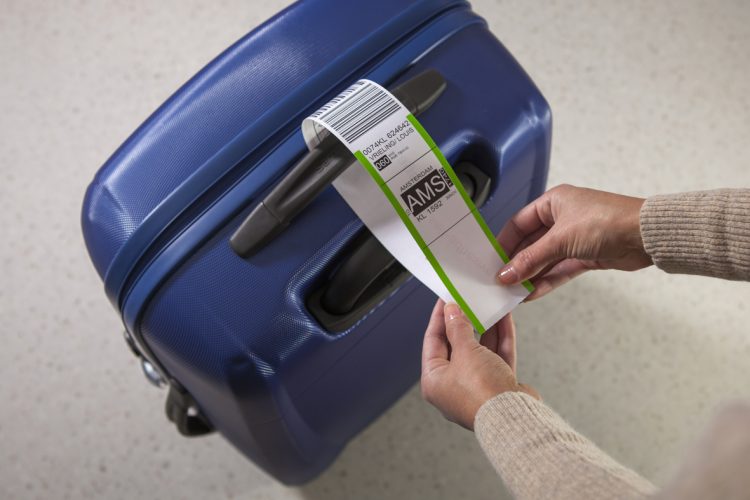

The modern passenger expects to be treated as a self-sufficient being. He or she now has the technological competence and information at their fingertips to make decisions for themselves. This is reflected in an airport by the self-service trend that continues to grow.
Efficient, time-saving and resource friendly, self-service benefits all. Be it the capacity to print ones own baggage tags and sort out baggage drop without queuing and relying on a member of staff to complete the process, to simply checking oneself in, self-service is already widespread and is only expected (we think) to become more and more entrenched in our passenger expectations when travelling by air. The age of autonomy has arrived!
#11 Apps & beacons
Apps and beacon-integration could revolutionise seamless travel
Apps are omnipresent. Anyone with a smartphone by definition uses an app in some shape or form. We are beginning to see a shift in the airport and aviation industry towards an increasingly number of airport and airlines offering an app. For example, London Heathrow offers a concierge app named Heathrow Airport Guide that offers consistent support to the passenger travelling through an airport. Be it real-time flight information, maps and useful information or easier booking possibilities for say parking or special assistance, in our opinion, the global shift to mobile and airport and aviation’s embrace of this fits International Airport Review‘s belief that we are witnessing the supremacy of ‘seamless travel’ in the modern airport world. Apps can offer a personal touch, increased efficiency and a technologically-current means of easily transmitting information.
To find out more about this concept, click here.
Further to this, apps and mobile technology have the potential to be used in harmony with beacons to offer a personal touch to a passenger’s experience in an airport.
Miami International Airport (MIA), for example is already showing the rest of the world what’s possible with beacons, with its location-aware app. The airport has leveraged beacons across its entire campus to create a personalised experience more akin to a concierge service than your standard airport experience.
The app provides full coverage of the airport and as travellers make their way through the airport, the app provides information and support that is relevant to their individual journey, including updates on their gate, flight times and baggage collection, as well as nearby food and retail outlets, prioritising suggestions based on their current location. And with ‘blue-dot’ functionality, map rotation, turn-by-turn directions, ‘walk times’ and a ‘near me’ feature, they allow passengers to quickly locate virtually anything inside the airport.
The SITA-powered mobile app solution at Miami
Not only do apps empirically benefit the passenger’s experience when travelling by air, they also have the capacity to encourage revenue generation through push notifications of special tailored offers or by simply promoting the idea of brand loyalty be it for an airport or airline by the very fact that the passenger has their specific app downloaded onto a device.
The future of personalised passenger experience looks mobile, app-centric and seamless.
#12 Airport cities
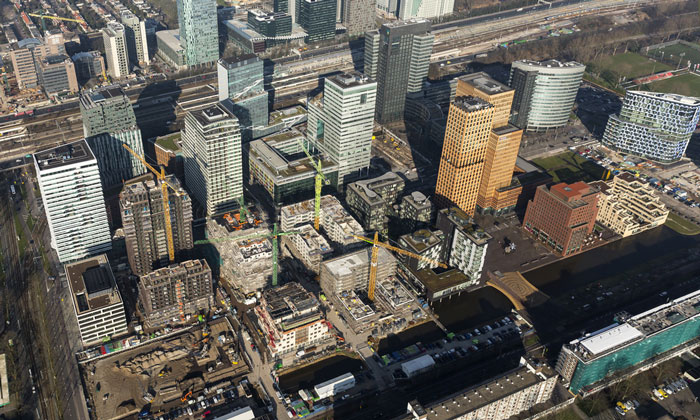

Construction ongoing at Amsterdam Zuidas
Having discussed Chinese airport expansion in the first instalment of our countdown, the world’s most populous country further demonstrates the emergence and proliferation of the airport city model. The aforementioned Zhengzhou is an east-central provincial capital barely known outside of China. By the year 2030, it is predicted that its airport’s two terminals and five runways that are to be built will be able to handle 70m passengers yearly. The city has plans to become an aerotropolis seven times the size of Manhattan but unlike JFK which lies over ten miles south east of Manhattan, Chinese planners aim for the city of Zhengzhou to be built around its airport.
Zhengzhou, an example of the concept of an airport city, will be surrounded by factories, research and development facilities, homes, exhibition spaces and much more.
“Aerotropolis: The Way We’ll Live Next” written in 2011 and written by John Kasarda envisages the future as defined by “the ubiquity of jet travel, round-the-clock workdays, overnight shipping, and global business networks has turned the pattern inside out. Soon the airport will be at the centre and the city will be built around it, the better to keep workers, suppliers, executives, and goods in touch with the global market.”
In essence, a city will no longer be defined as a large settlement with an airport on it periphery but rather as an airport with a city built around it.
Visible examples exist such as Amsterdam Zuidas, Las Colinas, Texas, and South Korea’s Songdo International Business District.
Welcome to the airport city: a combination of large airport, planned city, cargo shipping facility, and business and commercial hub.
#13 Cargo
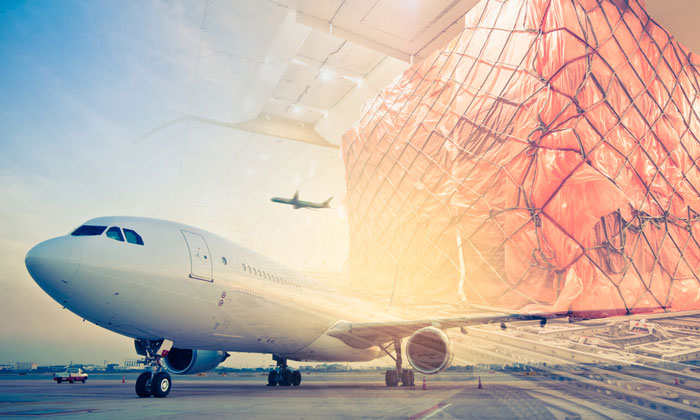

We imagine that cargo and the way in which we consider the shipping aspect of aviation will too see significant developments in light of technological changes. As argued by Mercator, we might well witness the ‘Uberisation of the air cargo industry’ as the rise of digital solutions reduce costs, improve efficiency, enhance flexibility, and allow for greater speed and scale – which will in turn, encourage innovation on a previously unforeseen level.
An intelligent cargo ecosystem of agile applications can bring together data insight, automation and connectivity to discover more intelligent ways of moving cargo around the world.
While it is considered that cargo has been slow to embrace technological change, that change is now beginning to happen.
A case study might be considered to be Brussels and BRUcargo: A dedicated and integrated logistics platform.
A cargo zone developed at Brussels Airport groups all air cargo stakeholders: airlines, forwarders, handling agents, general sales agents, customs personnel, FASFC border inspection, perishable centres, trucking companies, GDP-compliant infrastructure and IT platforms. Consequently, the creation of a digital and human community network at Brussels Airport enhances highly efficient transit operations. Flexible customs and border inspection authorities, committed to air cargo 24/7 at Brussels Airport, guarantee swift handling of cargo.
We most certainly will see the increasing integration and digitisation of the air cargo industry over the next 20 years.
#14 Augmented reality


“Virtual Reality (VR) is often associated with glasses that take you to a virtual world where your actual real movements are translated to the virtual world. On the other hand, perhaps even more relevant, Augmented Reality (AR) is more likely to penetrate the airline and airport space (click here to learn the difference between VR and AR).
The above image shows a hypothetical AR view of a passenger, where the view is enhanced with information (sensory input, static and dynamic information sources, location, object and context awareness) and functionalities (e.g. buying lounge access by looking at the lounge access button at the top right corner of the view, and blinking twice, which would act as a click of a mouse).
The same could be applied on the airport ramp to support ground operations through the use of the AR technology.”
There is no doubt that augmented reality will have a significant if not greater impact upon airport and aviation than virtual reality in future, both as a means of ensuring an even more personal and complete experience for the passenger as well as presenting a potential means for revenue generation for the airport itself.
Personalised offers might be made to passengers who have historically bought from a particular retailer in the past for example or perhaps AR could be integrated within an app and beacon solution to push offers to those who walk within a particular distance to a specific restaurant. The key aspect is that AR makes these offers visible and almost tangible. The possibilities are endless – watch this space.
#15 More accurate meteorological predictions


“With the way things are going, I am confident that the future of meteorology would be very exciting,” J Srinivasan, Professor at the Centre for Atmospheric and Oceanic Sciences, Indian Institute of Science, Bengaluru states.
“Today, sensors are getting smaller and inexpensive, which will revolutionise data collection. The massive power of computing enables us to model complex phenomena in the atmosphere at a very low resolution.”
We are already witnessing improvements specific to aviation due to the successful implementation of new technology in the tracking and dynamic management of traffic in light of adverse weather conditions because of their prediction well in advance.
WSI Fusion, the global flight operations management solution for commercial airlines from The Weather Company, an IBM Business, provides early insight into changing flight, airport, and airspace conditions, which offers a highly accurate glimpse into the future to better anticipate planning and staffing shifts. Fusion enables customers to optimise operations and mitigate the impacts of disruptive events – weather, outages, etc. – by fusing global public and proprietary weather information, airspace constraints, flight tracking information, and navigation data into a unified and clear operational picture to take the guesswork out of situational decisions.
Improved weather prediction and airports’ and airlines’ reaction to adverse conditions will not only increase efficiency and commercial damage but crucially customer satisfaction.
The next twenty years looks sunny in this respect in our opinion, though there is much more to be done in the responsible and intelligent collection and use of data to best deal with weather situations as we progress deeper into the 21st Century.
#16 The rise of Chinese airport infrastructure


China has undergone a frenzied period of airport construction over the past few decades. Between 2011 and 2015, over 100 airports were constructed in China on a governmental push to expand its airport infrastructure and capacity. This reflects what the government calls ‘airport economics’ – based around the notion that the building of an airport in a given area is directly conducive to regional economic growth.
One such example is in Zhengzhou an east-central provincial capital barely known outside of China. By the year 2030, it is predicted that its airport’s two terminals and five runways that are to be built will be able to handle 70m passengers yearly. To put this into perspective, this would currently sit as the second largest airport in Europe. What makes this even more staggering is that in 2014, Zhengzhou Xinzheng International Airport was the 17th busiest airport in China with 15,805,443 passengers.
This rate of capacity expansion makes the Heathrow decision look like a garage extension.
This rate of capacity expansion almost makes the Heathrow decision look like a garage extension. Zhengzhou is further expected to be able to process approximately 5m tonnes of cargo by 2030 which stands at more than three times as much as Heathrow typically handles at present.
The reasoning behind the astronomical rate of construction of Chinese airports is centred around the ability to provide shuttles for passengers located in remote cities of China to hubs that connect to other major international destinations. It’s an embrace of globalisation and is largely focused around the airport city/aerotropolis model which will be discussed later in the series.
There are obvious concerns for the environmental impact of the blistering pace of Chinese airport construction and there are debates as to whether the level of spending really is a sensible economic investment due to the increasing power of its railway network and rising debt. Either way, the impact of the 100 airports completed in this four year period on the global aviation balance cannot be denied. This however, along with much of the changes in China’s economic environment, remain almost impossible to accurately predict on a global scale.
#17 The low-cost take over
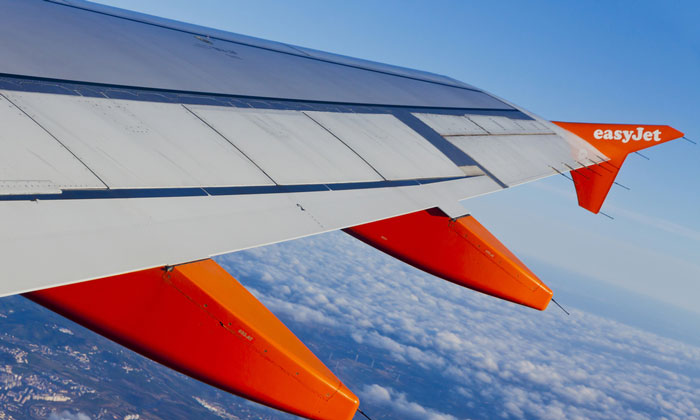

“Ryanair – The Amazon of Air Travel” many major newspapers reported in a similar shape or form following declarations from its CEO, the gregarious and forever quotable Michael O’Leary.
“We now have an opportunity with the new website to build Ryanair.com not just as the airline’s website but as a kind of Amazon for travel in Europe,” he stated to the Financial Times in 2015.
It is thought that this reflects the idea that the Irish airline is taking steps to tackle the online travel agency market and convince other airlines to allow their flights to be sold on Ryanair sites. This is where the Amazon analogy enters into the fray as this model is similar to that of the online giant.
The low-cost carriers are fantastically profitable and legacy airlines have struggled to enter into the budget market.
Here are 8 reasons for why the low-cost carrier model has been so successful.
Some critics are sceptical of the ‘Amazon’ approach however.
“Ryanair has little hope of becoming a Booking.com or Expedia but it could find new revenue streams if it convinces other airlines to enable it to sell their flights on Ryanair’s sites,” as suggested by Patrick Whyte of Skift.
Nevertheless, the gap between the low-cost carrier’s capacity and the long-haul model is becoming smaller and smaller as illustrated in the diagram below:
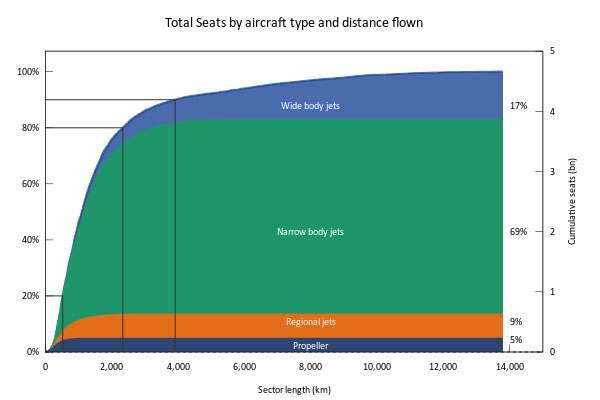

Norwegian’s latest long-haul venture to the US represents a prime example of the incremental encroachment of the low-cost carrier onto the legacy airline’s territory.
We believe the next 20 years to see the increasing market dominance of the low-cost carrier with more and more names entering the long-haul game. Increasing reliance on low-cost carriers from smaller airports, new technologies and the embrace of extensions to short-haul aircraft, equip the low-cost carriers with an arsenal of powerful tools to sweep across the market on their way to dominance over the next two decades.
For a more comprehensive insight, read James Halstead, cofounder of Aviation Strategy Ltd‘s article: A low-cost revolution? The power of the short-haul business model.
#18 Blockchain


What is blockchain? Maybe the buzzword across most tech-focused industries in 2017 read an easy-to-understand guide from IATA’s Houman Goudarzi for a quick introduction.
Here is his insight into how it might specifically revolutionise the airport industry in 2017:
Blockchain technology has been intensely in the spotlight across 2016, and will continue riding the wave in 2017. It would be harsh to call it a hype as it’s a genuinely disruptive force to be reckoned with in aviation and any other industry, in particular by intermediaries. Above all, it offers amazing opportunities which go well beyond financial transactions, albeit most of the popularity has been gained through Bitcoin and projects initiated by major international banks.
Some promising cases studies in the aviation space are related to:
- Tokenising Frequent Flyer Programs: Blockchain has the ability to turn airline miles into something much more pervasive and valuable outside the defined boundaries of airlines and their limited partners with whom passengers get to spend their miles. Imagine if your miles were accrued in real-time, and there was community-driven market place for you to use them instead of the limited spend options made available by individual airlines?
- Identity Management: Blockchain technology can take the hassle out of identity management. Here is a more detailed article on how it could revolutionise identity management in combination with biometrics technology.
- Item custody-change tracking: Bags change custody through their journey between airlines, airport, and ground handlers. When something goes wrong with a passenger’s bag it’s important to have a log of custody changes to be able to determine who is responsible. A semi-private blockchain can cater for this as a neutral ground for reporting custody changes throughout the value chain. Encryption and hashing may be necessary to safeguard the information. Another case study would be aircraft parts as they change custody between manufactures, traders, maintenance service providers, and airlines.
- Tokenising e-tickets: Smart Contracts can facilitate tokenisation of e-tickets and empower the value chain partners for ticket sales and other actions related to tickets. Imagine if an airline could define the business rules and conditions on how tickets are sold and used by its partners through the use of smart contracts on a blockchain, empowering partners across the value chain to act on behalf of the airline in a secure and efficient manner.
Whatever your view on the technology, many see blockchain as defining not just aviation but in fact the future of global commerce.
#19 Capacity issues and expansion
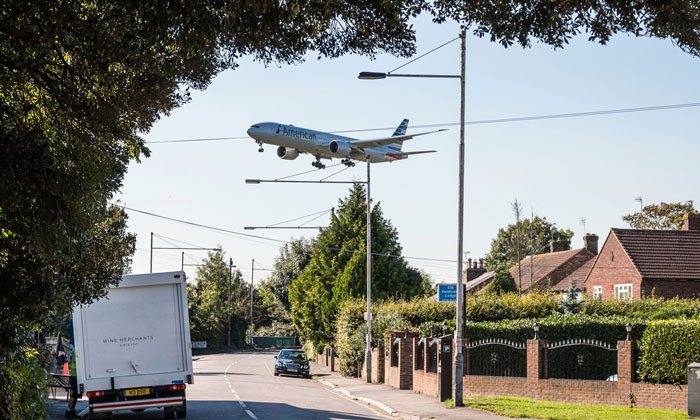

Heathrow’s historic third runway decision in 2016 allows for its expansion from a passenger capacity of roughly 75m per annum to 130m and is thought to be a critical decision made in alleviating London’s monumental capacity issues. The UK capital is not alone. With global passenger traffic on the increase, capacity issues will inevitably emerge and expansion plans unfold over the next two decades.
The International Air Transport Association (IATA) expects 7.2 billion passengers to travel in 2035, a near doubling of the 3.8 billion air travellers in 2016. The prediction is based on a 3.7% annual Compound Average Growth Rate (CAGR) noted in the release of the latest update to the association’s 20-Year Air Passenger Forecast.
“People want to fly. Demand for air travel over the next two decades is set to double. Enabling people and nations to trade, explore, and share the benefits of innovation and economic prosperity makes our world a better place,” said Alexandre de Juniac, IATA’s Director General and CEO.
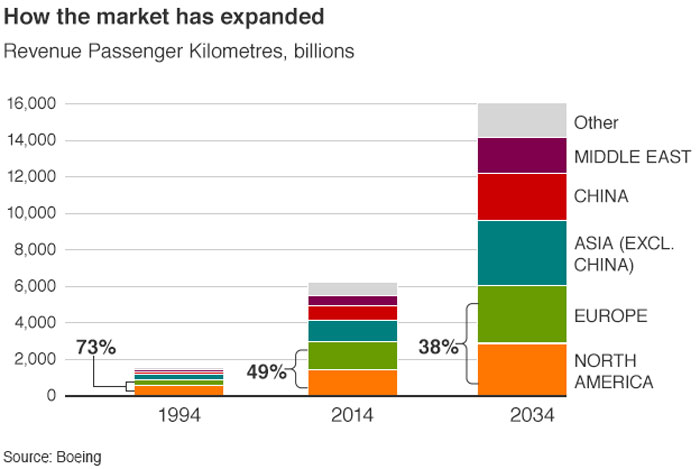

We are expecting the world’s largest airport to be completed in Istanbul in 2018; witnessing the aforementioned construction surge to continue in China; seeing low-cost airlines proliferate themselves across Asia and subsequently provoking growth across the world’s most populous continent and so we anticipate major expansion plans across each and every continent to emerge each week.
The two leading aircraft makers, Boeing and Airbus believe that this increase will come from emerging economies and their expansion of airport capacity, citing a direct link between air travel and economic prosperity.
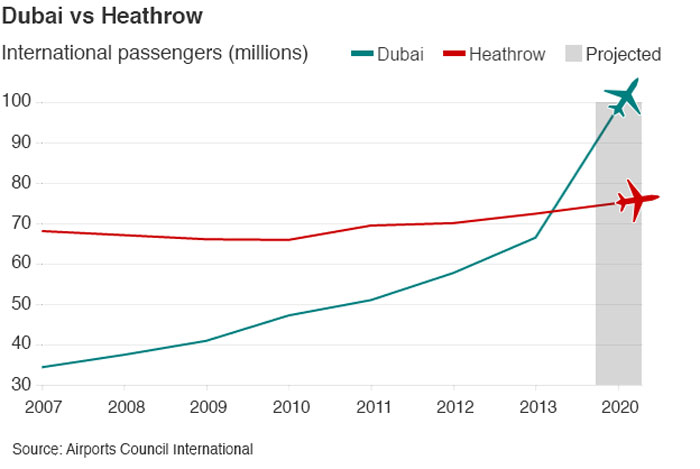

The inexorable rise has been largely attributed to Asia Pacific and Middle East’s economic progress. This will certainly shift the global aviation balances and over the next 20 years, it is thought that the world will witness significant changes across these regions with respect to airport construction, design and route development.
#20 The end of the airport/ airline battle
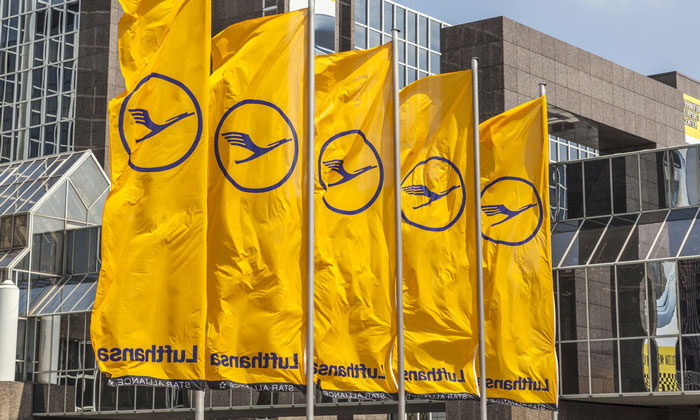

Collaboration will be necessary between all players in the airport and aviation industry if we are to face up to the issues that matter. Ensuring security, sustainability and strong and responsible progression, we require dialogue and discussion between airline, airport and regulator alike. Each facet of our industry has equal importance and responsibility for the way in which we all move forward.
Having spent time over the past 12 months covering various events, from AVSEC World in Kuala Lumpur to PTE in Amsterdam, it’s clear that attitudes are changing. Both airline and airport recognise for example that they share common interests – be them regarding the security of the passenger or ensuring that their experience is of the highest quality possible throughout their journey from door to door. Successful collaboration is more than possible as we see with Lufthansa at Frankfurt, KLM at Schiphol and many other airports and airlines around the world. The attitude is changing in a relationship once defined by its brutality and ALWAYS concerning revenues.
We predict that through discussion at events such as these and similar platforms for dialogue such as the upcoming Airport 2017 event in Vienna later this year in September, noticeable collective progress will be made. Only together can we move forward in the creation of an efficient, secure and sustainable future of airport and aviation.
On this note, we conclude International Airport Review’s definitive guide to what will change in aviation over the next 20 years. We hope you have enjoyed the series so far and as ever would love to hear from you. Do you agree/disagree… have we missed anything off of our list? Post your comments below and look out for future insight from International Airport Review…
Related topics
Airside operations, Apps, Augmented reality (AR)/ Virtual reality (VR), Big data, Cyber-security, Drones, Economy, Emissions, New technologies, Passenger experience and seamless travel, Passenger volumes, Regulation and Legislation, Sustainability, Sustainable development, Terminal operations



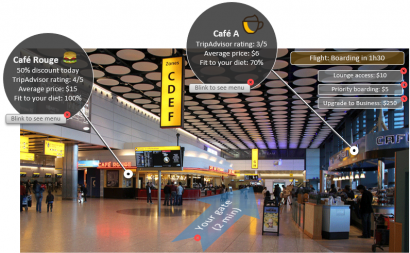
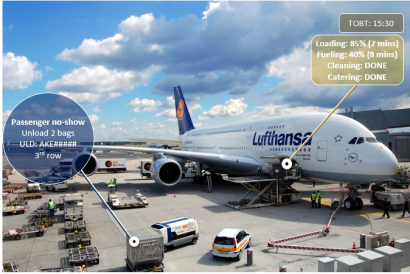

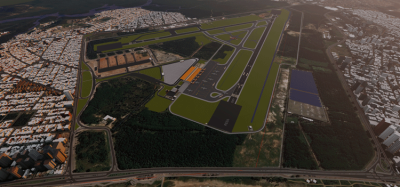













in my opinion , I think world carriers – FORGOT – that QUALITY PRODUCT IS A COMPETITIVE ADVANTAGE-
the formula is very simple -perfect schedule to meet the regional market- in-flight service- direct non-stop flights – leg room –
these are the demands of passengers whether business or leisure .
nowadays people can afford to travel regardless but the competition which is created by the carriers themselves is a sort of suicide
as for airports , being the largest or smallest is not the issue , most important is for the passenger to make onward connection fast and easy , not running between corridors etc .
Very well described blog. You are absolutely right that With increasing demand for more sophisticated services, aviation management is the key value driver for asset owners and other relevant stakeholders such as airport sponsors.